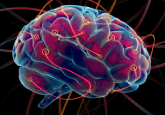All eyes are on the correlation found between vitreous humor biomarkers and Alzheimer’s disease

New research has demonstrated a correlation between biomarkers in the vitreous humor of the eye and confirmed Alzheimer’s disease (AD) and Chronic Traumatic Encephalopathy (CTE) cases.
A research team from Boston Medical Center (MA, USA), after studying post-mortem samples of brain and eye tissue, have demonstrated a significant correlation between biomarkers in the vitreous humor of the eye and confirmed AD and CTE cases. The study indicates that the biomarkers found in the vitreous humor may be a proxy for neuropathological diseases.
As it currently stands, AD and CTE are tentatively confirmed based on symptoms, clinical exam findings and cognitive testing, but are not fully confirmed until a post-mortem examination of the brain is conducted. In terms of AD, symptoms can occur much later than neuropathological changes that occur within the brain meaning that by the time a patient is diagnosed, the therapeutic effect is often limited. Thus, it is a significant priority to find and study biomarkers that may predict disease and can be measured before symptoms develop.
Several studies have determined a link between neurological diseases and ophthalmic conditions like glaucoma, diabetic retinopathy and cataracts, and, in general, patients with eye disease have an increased risk of developing a neurodegenerative disease. Investigating biomarkers in this high-risk population is significant in order to study their part in the early diagnosis of AD.
Manju Subramanian, MD, an ophthalmologist at Boston Medical Center and an associate professor in ophthalmology at Boston University Chobanian & Avedisian School of Medicine (MA, USA) commented:
“To our knowledge, this is the first study to investigate the role of vitreous fluid biomarkers and link it to confirmed post-mortem brain tissue pathological examination of AD. In addition, this is the first study to find a link between vitreous fluid biomarkers and confirmed CTE. Our findings provide further evidence to support the potential role of vitreous biomarkers in early diagnosis and prognostication of diseases like AD and CTE.”
In this study, researchers demonstrated a link between pathologically confirmed AD and CTE with biomarkers, including total Tau and neurofilament light chain. They also found that alterations in these neurodegenerative proteins located in vitreous fluid confirmed that the eye indicates neuropathological changes in the brain, supporting investigations into the role of the eye in the diagnosis of these neurological diseases.
These findings support the teams’ previous research exploring the idea that biomarkers in vitreous fluid are linked to cognitive function in live patients with both mild cognitive impairment and normal cognition. This latest study’s findings are integral for the basis of future studies to continue to investigate the role of biomarkers in the diagnosis and management of neurological diseases such as AD and CTE.
Sources: Vig V, Garg I, Tuz-Zahra F et al. Vitreous humor biomarkers reflect pathological changes in the brain for Alzheimer’s disease and chronic traumatic encephalopathy. J. Alzheimer’s Dis. 93(3), 1181 – 1193 (2023). EurekAlert press release, www.eurekalert.org/news-releases/992822





